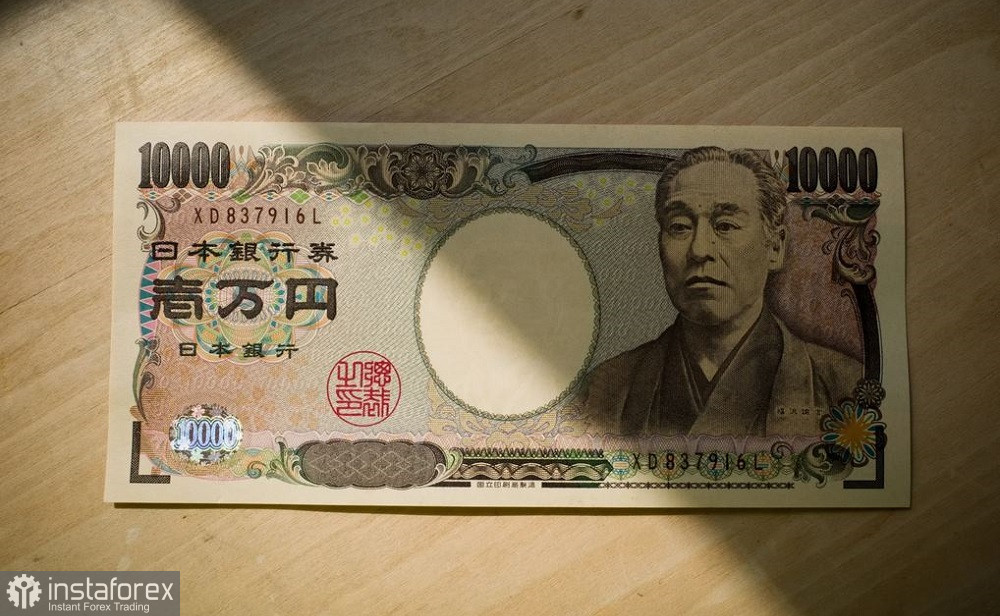Today, USD/JPY reached a three-month high and tested the 154.00 resistance level (upper line of the Bollinger Bands indicator on the D1 timeframe). USD/JPY opened the week with a gap up. Friday's closing price was 152.30, and today's opening was 152.94, leaving the gap unfilled. The yen is under intense pressure following the unexpected and, arguably, sensational results of Japan's snap parliamentary elections. Factors already challenging USD/JPY sellers—such as the Bank of Japan's indecision and inflation deceleration—are now intensified by the new political instability.

Briefly recapping, Shigeru Ishiba, who won last month's party election and was subsequently appointed as prime minister, called an early parliamentary election, believing it would strengthen his political position and provide him with greater political flexibility. However, this decision turned out to be a critical error for Ishiba and his ruling party, which may soon lose its majority.
As it stands, the Liberal Democratic Party lost its majority in the lower house—a rare event in Japanese political history, marking the first time the LDP has lost ruling status since returning to power in 2012.
The yen reacted negatively to the election outcome. First, given the political instability, the Japanese central bank is unlikely to pursue any moves to tighten (or normalize) monetary policy. This adds yet another reason for the Bank of Japan to take a pause (in addition to other factors discussed below).
Second, the economic stance of the new coalition and potential changes in government (should Ishiba lose his position, which seems likely) remain unclear.
Analysts at Okasan Securities note that many opposition politicians who could join a minority coalition are calling for measures to increase wages. Should these policies take effect, it would complicate the Bank of Japan's ability to raise interest rates without more clarity on wage growth. This clarity will likely come only after the spring "shunto" (Japan's annual wage negotiations between companies and unions). Thus, any adjustments to monetary policy might be postponed until next spring, despite earlier expectations of a December rate hike by some experts.
In short, USD/JPY traders currently face many unanswered questions. What form will the new parliamentary coalition take? What will the new government look like? Will Shigeru Ishiba retain his position? And what course will a minority coalition take if one is formed?
We won't have to wait long for answers. Under the Japanese Constitution, an extraordinary session of Parliament must be convened within 30 days to elect a prime minister. In this climate of political uncertainty, the yen will likely remain under pressure, and USD/JPY buyers could push the pair higher, possibly toward the 154.00-155.00 range.
However, politics isn't the only force weighing on the yen. Other fundamental factors allow USD/JPY bulls to maintain their confidence. First and foremost is inflation, which showed signs of slowing in September. The Tokyo Consumer Price Index fell to 1.8% in October, the lowest growth rate since April this year. The core index, excluding new food prices, also slowed to 1.8% in October, continuing its downward path (it was recorded at 2.0% in September).
The broader CPI data released earlier also reflected slowing inflation, with the overall CPI decelerating to 2.5% last month (the slowest growth rate since April), and the core CPI index falling to 2.4% (also the lowest since April).
All of this suggests that the Bank of Japan may not rush into the next rate hike cycle. BOJ Governor Kazuo Ueda, incidentally, hinted at this stance before the elections. Now, those advocating a wait-and-see approach have one more significant argument in their favor.
The only factor that might save USD/JPY sellers could be a hit to the U.S. dollar. This scenario could happen if the U.S. labor market once again disappoints dollar bulls. October's Non-Farm Payroll report is due this Friday, and early forecasts suggest a weak result (expected job growth is around 110,000).
Thus, despite the yen's overall weakness, it may be too soon to jump into USD/JPY longs—at least until traders break through the 154.00 resistance level, corresponding to the upper line of the Bollinger Bands on the D1 timeframe. The yen remains weak, but the dollar hasn't yet found a firm footing either. Under these fundamental conditions, a wait-and-see approach to this pair seems prudent.
 English
English 
 Русский
Русский Bahasa Indonesia
Bahasa Indonesia Bahasa Malay
Bahasa Malay ไทย
ไทย Español
Español Deutsch
Deutsch Български
Български Français
Français Tiếng Việt
Tiếng Việt 中文
中文 বাংলা
বাংলা हिन्दी
हिन्दी Čeština
Čeština Українська
Українська Română
Română

